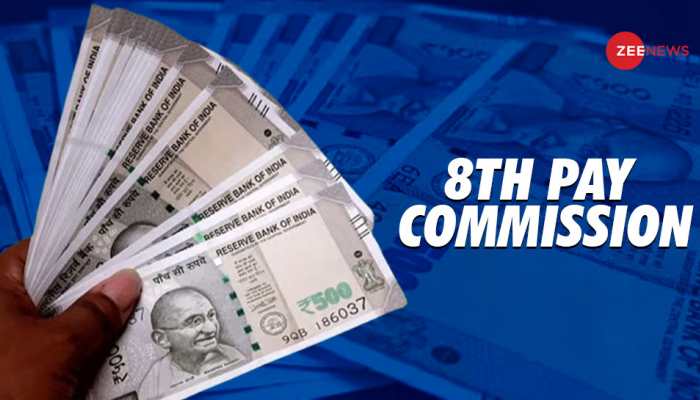On the brink of trade war? China retaliates over Trump tariff plan, announces duties on key US imports
Unlike Washington's list, which was filled with many obscure industrial items, China's list strikes at signature US exports.
Trending Photos
)
BEIJING/WASHINGTON: China hit back on Wednesday at the Trump administration's plan to slap tariffs on $50 billion in Chinese goods, retaliating with a list of similar duties on key US imports including soybeans, planes, cars, whiskey and chemicals. Beijing's list of 25 percent additional tariffs on US goods covers 106 items with a trade value matching the $50 billion targeted on Washington's list, China's commerce and finance ministries said.
The effective date will depend on when the US action takes effect.
The announcement triggered further heavy selling in global stock markets and commodities, with US stock futures sliding 1.5 percent, soybean futures plunging 3.7 percent and the dollar briefly extending early losses. China's yuan skidded in offshore trade.
The scale of China's tariff targets was in line with Beijing's pledge to mount a commensurate response, but it was released sooner than many observers had expected, adding to market fears that world's two largest economies are spiralling towards a trade war that could shake the global economy. Unlike Washington's list, which was filled with many obscure industrial items, China's list strikes at signature US exports.
Hours earlier, the US government unveiled a detailed breakdown of some 1,300 Chinese industrial, transport and medical goods that could be subject to 25 percent duties, ranging from light-emitting diodes to chemicals and machine parts.
Washington's move, broadly flagged last month, is aimed at forcing Beijing to address what Washington says is deeply entrenched theft of US intellectual property and forced technology transfer from US companies to Chinese competitors, charges Chinese officials deny.
Chinese foreign ministry spokesman Geng Shuang said China had shown sincerity in wanting to resolve the trade dispute through negotiations. "But the best opportunities for resolving the issues through dialogue and negotiations have been repeatedly missed by the US side," he told a regular briefing on Wednesday.
"We regret that soybeans are on the list. We have done everything to prevent this from happening, but we are still calling for a resolution," said Zhang Xiaoping, China director of the US Soybean Export Council told Reuters.
The tariff list from the office of US Trade Representative Robert Lighthizer followed China's imposition of tariffs on $3 billion worth of US fruits, nuts, pork and wine to protest new US steel and aluminium tariffs imposed last month by Trump.
Publication of Washington's list starts a public comment and consultation period expected to last around two months.
Many consumer electronics products such as cellphones made by Apple Inc. and laptops made by Dell were excluded, as were footwear and clothing, drawing a sigh of relief from retailers who had feared higher costs for American consumers.
A US industry source said the list was somewhat unexpected in that it largely exempts major consumer-grade technology products, one of China's major export categories to the United States. "The tech industry will feel like overall it dodged a bullet," the source said, but added that traditional industrial goods manufacturers, along with pharmaceuticals and medical device firms could suffer.
Many US business groups support Trump's efforts to stop the theft of US intellectual property, but have questioned whether tariffs are the right approach. They warn that disruption to supply chains that rely on Chinese components will ultimately raise costs for consumers.
"Tariffs are one proposed response, but they are likely to create new challenges in the form of significant added costs for manufacturers and American consumers," National Association of Manufacturers President Jay Timmons said in a statement.
ALGORITHM SHIELDS US CONSUMERS
USTR developed the tariff targets using a computer algorithm designed to choose products that would inflict maximum pain on Chinese exporters, but limit the damage to US consumers. A USTR official said the list got an initial scrub by removing products identified as likely to cause disruptions to the US economy and those that needed to be excluded for legal reasons.
"The remaining products were ranked according to the likely impact on US consumers, based on available trade data involving alternative country sources for each product," the official, who spoke on condition of anonymity, told Reuters.
USTR said the tariff list targeted products that benefit from China's industrial policies, including the "Made in China 2025" program, which aims to replace advanced technology imports with domestic products in strategic industries, such as advanced information technology, robotics, and pharmaceuticals.
Such policies coerce American companies into transferring their technology and intellectual property to Chinese enterprises and "bolster China's stated intention of seizing economic leadership in advanced technology as set forth in its industrial plans", USTR said.
Many products in those segments appear on the list, including antibiotics and industrial robots and aircraft parts. USTR did include some key consumer products from China, including flat-panel television sets and motor vehicles, both electric and gasoline-powered with engines of 3 litres or less.
A Reuters analysis that compared listed products with 2017 Census Bureau import data showed $3.9 billion in flat-panel television imports, and $1.4 billion in vehicle imports from China. Among vehicles likely to be hit with tariffs is General Motors Co's Buick Envision sport-utility vehicle, which is assembled in China and sold in the United States. Volvo, owned by China's Geely Motors, also exports Chinese-built vehicles to the United States.
More than 200 products on the list saw no US imports last year, including large aircraft and communication satellites, while some categories were highly unlikely to ever be imported, such as China-made "mortars" and "grenade launchers".
USTR has scheduled a May 15 public hearing on the tariffs, which were announced as the result of an investigation under Section 301 of the 1974 US Trade Act. China ran a $375 billion goods trade surplus with the United States in 2017, a figure that Trump has demanded be cut by $100 billion.
Stay informed on all the latest news, real-time breaking news updates, and follow all the important headlines in india news and world News on Zee News.
Live Tv







)
)
)
)
)
)
)
)
)
)
